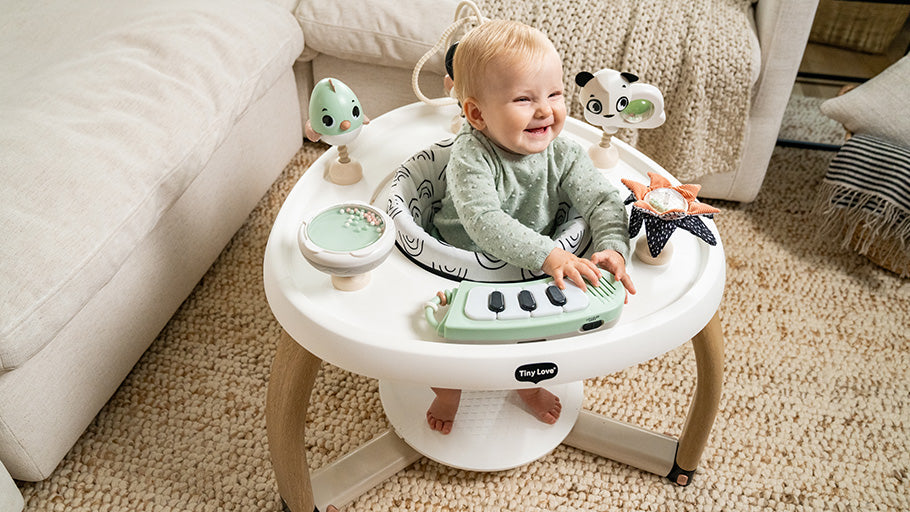Hands
The muscles are stronger and the movements become more defined. Jumpy hand movements are softer and smoother, clenched fists are now released and the fingers are more relaxed and open. By the end of the third month, the grasp reflex weakens considerably, but is not entirely gone; babies are still unable to grasp an object voluntarily. By the end of the third month, babies begin to strike at objects purposely, which is the first expression of eye-hand coordination.Eyes
By 8-10 weeks, babies' eye muscles are stronger, and they can focus on objects placed in their field of vision, and even track their movement; as eye-hand coordination progresses, babies can move their head to continue tracking a moving object.Eye-Hand Coordination
Babies now reach a breakthrough discovery: they become aware of their own hands. Babies are fascinated by this discovery, and continue to explore their hands by gazing at them and putting them into their mouth. Random strokes at an object stir babies to turn their heads towards it. The discovery of the hands and the control they have over them opens a new world of experiences. Next, babies look at an object and try to reach it. Initially, these attempts may be strictly trial and error, but by the end of the third month, following frequent practice, babies reach out and strike at objects with purpose and intention.
Milestones
- At two months, baby begins to become aware of his hands, exploring them by putting them into his mouth.
- Between two and three months, eye-hand coordination begins to develop.
- At three months, the grasp reflex gradually fades.
Tiny Tips
- Place a hanging toy within baby's reach, so that he can strike it. This helps develop eye-hand coordination.
- Offer your baby a rattle that makes an appealing sound. The positive feedback encourages her to move her hands, strengthening muscles and developing eye-hand coordination.



